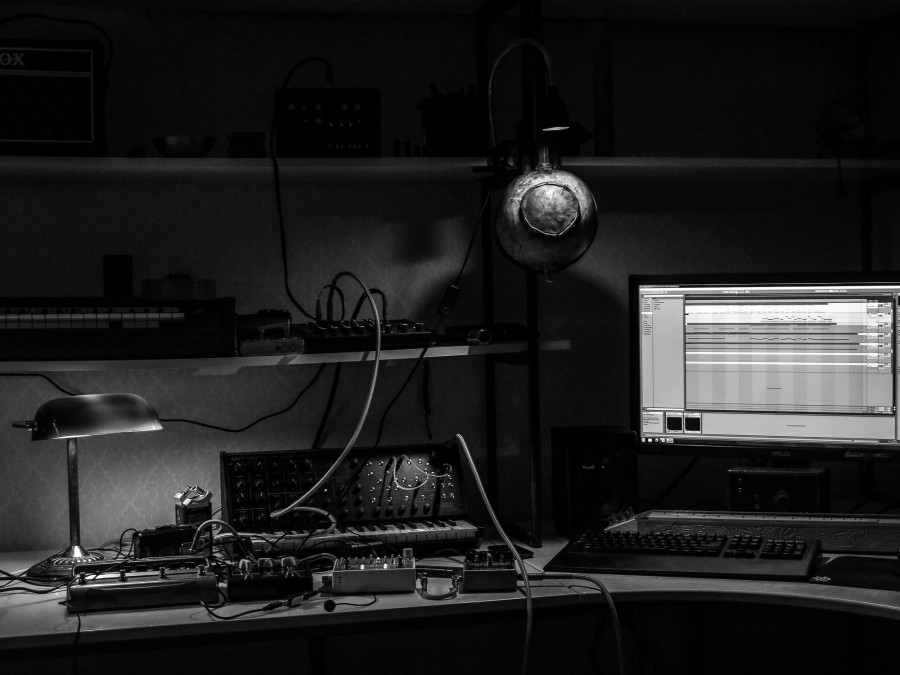Dark Ambient 101 : Introduction
Dark ambient is a genre that is still quite a mystery, even to many dedicated fans,
though it’s been around for several decades. An important factor in the dark ambient scene is the minuscule number of followers, in comparison to many other genres, scattered over the entirety of the globe. From Argentina to Siberia, dark ambient listeners seek something unique, something that is wholly outside the lines of modern trends.
During my own personal discovery of the genre, I waded through numerous interviews and live performances, trying to discern exactly what the hell is going on, how these musicians were creating such beautifully blackened ambient soundscapes. Years later, I understand a whole lot more than I did in the beginning. But it is still a daunting task, attempting to understand the machinations and sorcery of these musicians.
Dark Ambient 101 was born of this search for understanding. This article can be used as an interesting read for the average follower. It can be a first step towards something bigger and better for the fledgling artist. Finally, it can be a means for dark ambient artists across a spectrum of styles and regions, to find out a bit more about each other, why one artist has this particular sound or another comes up with something totally different.
This article is quite massive. There is a mountain of useful and interesting information here to keep you entertained possibly for hours! So proceed in whichever way will serve you best. You can search the questions for something that particularly draws your interest, or you can browse only the answers of your favorite artist. I, however, would recommend enjoying this a little at a time over several sessions. You are likely to have a much better picture, coming out the other side, of how and why dark ambient artists make the decisions they make, from album theme to field-recording microphone models.
Artists featured in this article:
(for readability, I will use the first/primary dark ambient project of each artist, you can find links to all artists’ sites and social media at the end of the article.)
- Pär Boström: Kammarheit, Cities Last Broadcast, Hymnambulae, Altarmang, Bonini Bulga and the Hypnagoga Press label
- Will Connor: Seesar, New Leaders of the Eldritch Cult, Seesar Drums, Dread Falls Theatre, and the Dagon Records label
- Hristo Gospodinov: Shrine
- Simon Heath: Atrium Carceri, Sabled Sun and the Cryo Chamber label
- Daniil Kazantsev: Stuzha, Algol, Black Wanderer
- Alexander Lesswing: Skadi, Psychogram, CoM
- Pavel Malyshkin: Ugasanie (Угасание), Polterngeist, Silent Universe
- Claudio Mebitek: Mebitek
- Raffaele Pezzella: Sonologyst and the Unexplained Sounds Group label
- Sasha Puzan: protoU
- Grant Richardson: Atrox Pestis, Gnawed and the Maniacal Hatred label
- Jurica Santek – Aegri Somnia, Tertium Organum, Efil, and Esoteric Terrorist
- Dehn Sora: Treha Sektori, Throane, Church of Ra, Ovtrenoir, Sembler Deah
- Ketil Søraker: Taphephobia, Aural Whiteout
Contents:
(open one section at a time, or the full article here.)
Introduction
01. Analog or Digital
02. Drones
03. Field Recordings
04. Vocals
05. DAW (Digital Audio Workstation)
06. Computers
07. Samples
08. Instruments
09. Mastering
10. General Advice
Artists’ Sites & Social Media
Next: Dark Ambient 101: Analog or Digital
Read the full article.

